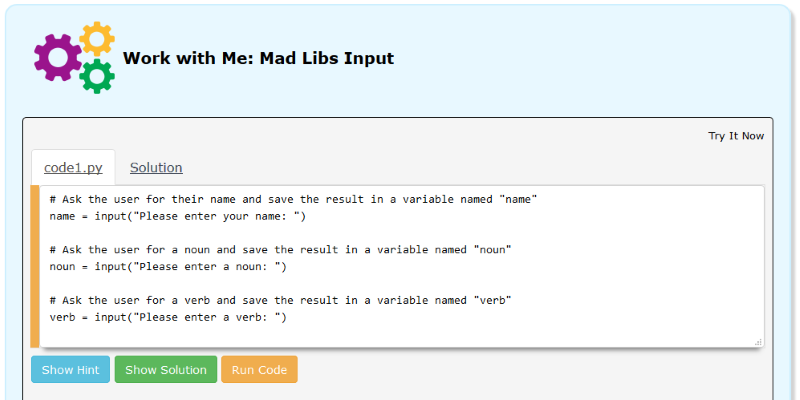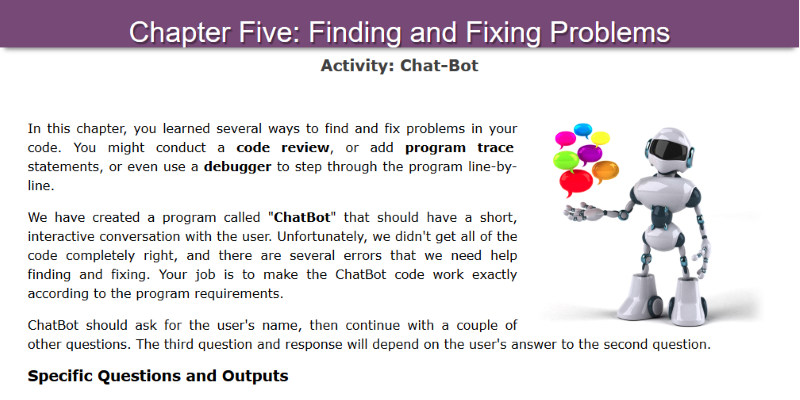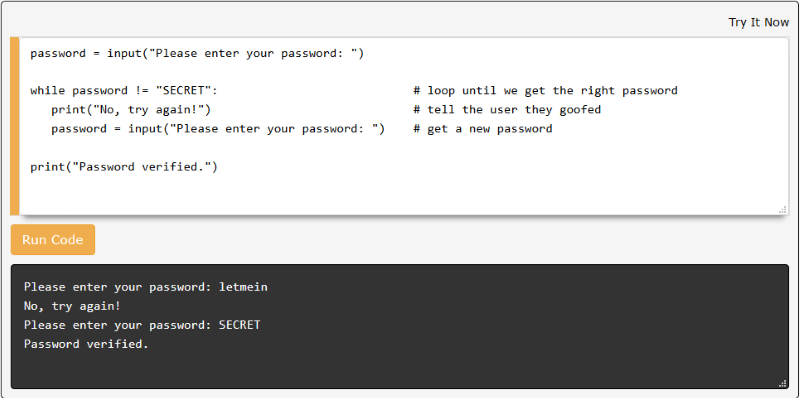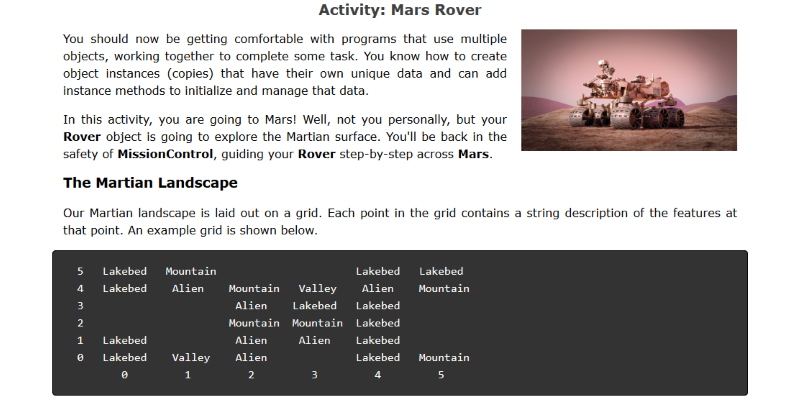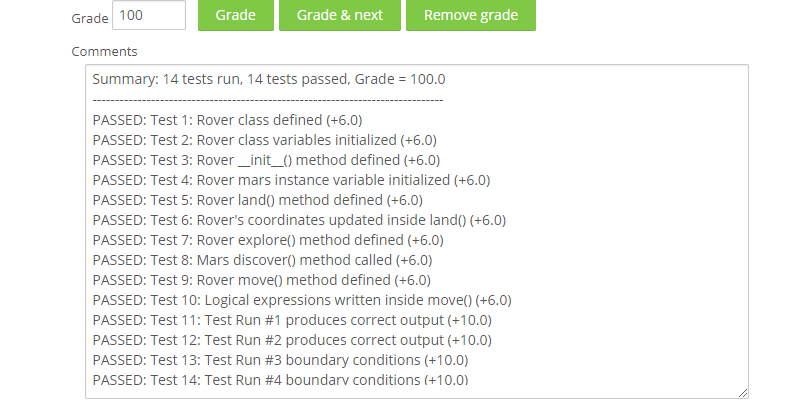Available on Windows  Mac
Mac  , Chromebooks and tablets
, Chromebooks and tablets
Recommended for Grades 6 - 12
The CompuScholar Python Programming course uses the Python language to teach introductory computer programming. This one-semester course is a perfect introduction to computer science.
Hot Features
- Requires no local software installation
- Student coding projects are auto-graded
Topics Covered
This course covers fundamental coding topics and skills such as:
- Printing and User Input
- Data types and variables
- Logical expressions and flow control
- Debugging skills
- Lists and Loops
- Working with numbers, dates and strings
- Writing and using functions
- Simple Object-Oriented Programming
- ...and more!
Click on the Course Syllabus tab to see a complete list of topics.
Student Work
All lesson quizzes and chapter tests are auto-graded by our system. Students will complete hands-on codiing projects, which are also auto-graded by our system.
Students will write code directly in our online Python engine; no local software installation or file management is required. Each chapter features many in-lesson exercises as well as graded activities. Scroll through the images below to see a few examples of student work.
Please review our course syllabus, which contains the following information:
- Specific chapter and lesson topics
- Pacing guide, overall course length and exepected hours per week
Python Programming can be used to meet standards for introductory coding courses in many states. Please click on your state link below to view all alignments for your state.
If you don't see your state listed, please contact us to discuss your requirements!
Alabama - Visit our Alabama standards page
Arizona - Visit our Arizona standards page
Arkansas - Visit our Arkansas standards page
California - Visit our California standards page
Connecticut - Visit our Connecticut standards page
Florida - Visit our Florida standards page
Georgia - Visit our Georgia standards page
Hawaii - Visit our Hawaii standards page
Idaho - Visit our Idaho standards page
Illinois - Visit our Illinois standards page
Indiana - Visit our Indiana standards page
Iowa - Visit our Iowa standards page
Kentucky - Visit our Kentucky standards page
Louisiana - Visit our Louisiana standards page
Massachusetts - Visit our Massachusetts standards page
Mississippi - Visit our Mississippi standards page
Missouri - Visit our Missouri standards page
Maryland - Visit our Maryland standards page
Michigan - Visit our Michigan standards page
Minnesota - Visit our Minnesota standards page
Nevada - Visit our Nevada standards page
New Mexico - Visit our New Mexico standards page
New York - Visit our New York standards page
North Carolina - Visit our North Carolina standards page
Ohio - Visit our Ohio standards page
Oklahoma - Visit our Oklahoma standards page
Pennsylvania - Visit our Pennsylvania standards page
South Carolina - Visit our South Carolina standards page
Tennessee - Visit our Tennessee standards page
Texas - Visit our Texas standards page
Utah - Visit our Utah standards page
Virginia - Visit our Virginia standards page
Washington - Visit our Washington standards page
West Virginia - Visit our West Virginia standards page
Wisconsin - Visit our Wisconsin standards page
The course can be completed using a Windows  or Mac
or Mac  computer, Chromebook or any other web-capable device with sufficient web browser and an Internet connection.
computer, Chromebook or any other web-capable device with sufficient web browser and an Internet connection.
No local software installation is required. The entire course and all hands-on projects can be completed through the web browser!
For detailed hardware and software requirements, please see:
